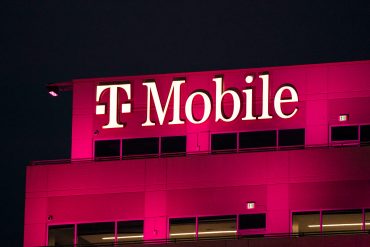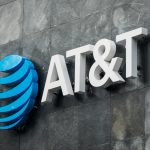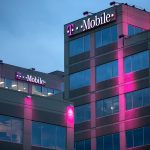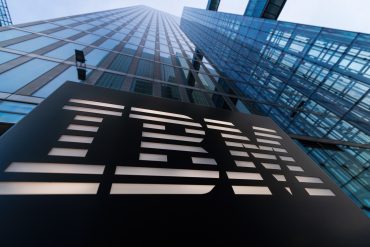
- Earnings Season
- Subscriber Growth
- Telecom
T-Mobile Reports Record Q3 Growth and Broadband Gains
7 minute read

T-Mobile’s Q3 Momentum Accelerates with Subscriber Surge and Broadband Dominance as the Wireless Leader Doubles Down on 5G, Fixed Wireless, and Acquisition Synergies.
Key Takeaways
- Revenue surged 8.9% year-over-year to $22 billion, beating the $21.82 billion consensus, while core adjusted EBITDA climbed 6% to $8.7 billion; net income dipped to $2.7 billion due to a $208 million impairment, but diluted EPS held at $2.41.
- Postpaid phone net additions hit 1 million—the highest Q3 in over a decade—driving 2.3 million total postpaid customer adds amid industry-leading churn of 0.89%; postpaid ARPU rose 2.7% to $50.71, fueled by premium plans and upgrades.
- Broadband net adds reached 560,000 (506,000 5G fixed wireless), pushing total broadband customers to 8.9 million; management raised FY2025 guidance across the board, including core adjusted EBITDA to $33.7-33.9 billion and postpaid net adds to 7.2-7.4 million.
Introduction
T-Mobile US, Inc. unleashed blockbuster third-quarter results on October 22, 2025, underscoring its unchallenged position as the U.S. wireless frontrunner in an era of maturing 5G and explosive fixed broadband demand. Total revenues rocketed 8.9% to $22.0 billion, surpassing Wall Street’s $21.82 billion estimate, while core adjusted EBITDA advanced 6% to $8.7 billion—the industry’s best. Net income slipped to $2.7 billion from $3.0 billion a year ago, pressured by a $208 million impairment charge tied to recent acquisitions, but diluted EPS remained steady at $2.41.
The quarter caps a transformative year marked by the UScellular acquisition and fiber expansions via Metronet and Lumos, shifting competition from raw subscriber battles to integrated 5G-broadband ecosystems. Postpaid phone adds of 1.0 million shattered expectations, while broadband growth accelerated to 560,000 net adds. These results ignited a 3.2% pre-market surge in shares, extending gains to 4.1% by midday as investors cheered raised guidance and network supremacy.
Key Developments
T-Mobile’s Q3 showcased explosive growth across segments, amplified by acquisitions, even as legacy pressures lingered in prepaid. Consolidated net cash from operating activities soared 21% to $7.5 billion, fueling $4.8 billion in adjusted free cash flow and $3.5 billion in stockholder returns via repurchases and dividends.
The Postpaid segment—driving ~68% of service revenues—delivered $14.9 billion in quarterly sales, up 12% YoY, the industry’s top mark. The 1.0 million postpaid phone net adds marked the best Q3 in over a decade, with total postpaid net customer additions hitting a record 2.3 million (including 3.3 million from UScellular). Postpaid net account adds rose 26% to 396,000, a best-ever result. Postpaid phone ARPU climbed 2.7% to $50.71, reflecting premium plan uptake and device cycles, while overall postpaid ARPU advanced to $149.44. Churn held at an enviable 0.89%, up just 3 basis points YoY and leading peers. Equipment revenues benefited from iPhone 17 upgrades, delivering 90% faster median download speeds on T-Mobile’s network versus competitors.
Broadband emerged as the quarter’s growth engine. Total broadband net adds of 560,000—up 34% YoY and industry-best—pushed customers to 8.9 million, with 5G fixed wireless adding 506,000 to reach 8.0 million. Fiber net adds of 54,000 were supercharged by the Metronet acquisition (755,000 customers) and Lumos (97,000 from Q2). T-Mobile Home Internet claimed the fastest fixed wireless title, with 50% quicker median speeds than rivals. Service revenues grew mid-teens, underscoring pricing resilience in a bundled 5G ecosystem.
Prepaid added 43,000 net customers, up 19,000 YoY, bolstered by the Ka’ena acquisition (3.5 million added in Q2 2024), though ARPU dipped to $33.93 amid mix shifts. Churn improved to 2.77%. Wholesale and other segments contributed steadily, with total customers reaching a record 139.9 million.
Cash flow robustness enabled aggressive returns: $2.5 billion in stock buybacks and $987 million in dividends. Capex rose 35% to $2.6 billion, reflecting UScellular integration and spectrum investments. CEO Mike Sievert encapsulated the momentum:
We’re not just winning—we’re lapping the field, delivering the best network, value, and experience to more customers than ever.

Market Impact
T-Mobile’s results sparked euphoria, with shares jumping 3.2% pre-market and closing up 4.1%, outpacing a 0.8% S&P 500 gain. The beat and raised guidance overshadowed the impairment, validating T-Mobile’s acquisition strategy. Analysts piled on: Deutsche Bank hiked its “buy” rating to a $250 target, praising “unmatched subscriber momentum and broadband acceleration,” while Oppenheimer called the UScellular close “transformative for rural coverage.”
Peers felt the heat. AT&T edged up 0.9% on its own solid print but trailed T-Mobile’s wireless adds; Verizon slipped 1.2% amid slower broadband traction. T-Mobile’s forward P/E of 18.2x—above Verizon’s 9.2x but justified by 20%+ EPS growth—positions it as a growth premium play, complemented by a 1.2% dividend yield. Net debt lingers at ~$70 billion (2.1x EBITDA), but $4.8 billion quarterly FCF signals deleveraging potential.
Credit metrics shine, with no covenant breaches and stable ratings. Efficiency held at 62%, balancing growth investments with cost controls, though prepaid headwinds temper the narrative.
Strategic Insights
The record 1.0 million postpaid phone adds—fueled by UScellular’s 3.3 million infusion—bolster T-Mobile’s convergence playbook, where 5G fixed wireless bundling now reaches 40%+ of postpaid households, enhancing retention and ARPU. Broadband’s 560,000 net adds (506,000 5G) contribute to 2.8 million year-to-date growth, highlighting rapid deployment: the UScellular deal adds rural depth, while Metronet/Lumos fiber expansions target 1.5 million+ locations by 2026, with joint ventures eyed for capital efficiency.
Sievert’s boast of “lapping the field” is backed by Opensignal accolades for #1 5G coverage and reliability. The $4.4 billion UScellular acquisition—closing Q3 2025—frees spectrum assets for 5G-Advanced, complementing the $23 billion EchoStar pursuit (pending regulatory nods). No major divestitures mar the balance sheet, but impairment charges underscore integration costs.
Total debt of ~$85 billion yields 2.1x EBITDA leverage—below the 2.5x target—though further M&A could nudge it to 2.4x, offset by FCF ramps. Challenges endure: prepaid ARPU erosion signals value-segment saturation, while wholesale volatility offers limited buffer. Capex at ~$10 billion for FY2025 prioritizes returns via edge computing and private 5G for enterprises.
Data and Forward Outlook
Subscriber firepower persists: 1.0 million postpaid phone adds propelled 2.4 million total net customers, while broadband’s 560,000 adds (506,000 5G fixed wireless) expanded the base to 8.9 million. ARPU resilience shone—postpaid phone at $50.71 (+2.7%) despite competition, broadband exhibiting mid-teens revenue velocity—while R&D at ~1.5% of revenues advances 5G-Advanced.
Management raised FY2025 guidance: postpaid net customer adds to 7.2-7.4 million (from 6.1-6.4 million), postpaid phone adds to ~3.3 million, fiber net adds to ~130,000, core adjusted EBITDA to $33.7-33.9 billion (from $33.3-33.7 billion), net cash from ops to $27.8-28.0 billion, capex to ~$10.0 billion, and adjusted FCF to $17.8-18.0 billion. The 2026-2027 view forecasts high-single-digit service revenue growth, 5%+ annual EBITDA expansion, mid-20s EPS growth by 2027, and FCF exceeding $20 billion.
Analysts endorse the path. JPMorgan forecasts broadband contributing 7% to 2026 EPS uplift, though prepaid risks loom. A 50-basis-point rate hike could add ~$150 million to annual interest costs, cushioned by $5 billion in buyback capacity and dividend hikes.
Conclusion
T-Mobile’s Q3—$22.0 billion in revenue paired with record subscriber hauls—exemplifies relentless execution in a 5G-saturated landscape. The 1.0 million postpaid phone adds and 560,000 broadband gains affirm a convergence strategy betting on network primacy over price wars.
While impairments highlight M&A frictions, fundamentals gleam: elite churn, ARPU tailwinds, gushing FCF, and escalating capex efficiency. The UScellular integration and fiber acquisitions prime T-Mobile to claim fixed broadband leadership, forging an infrastructure moat for revenue acceleration.
For growth-oriented investors eyeing telecom, T-Mobile offers a compelling thesis: superior network economics, acquisition-fueled scale, a forward P/E premium earned through 20%+ growth, and a management squad scripting the industry’s next chapter. In a sector tilting toward integrated connectivity, T-Mobile’s aggressive playbook may outrun even the boldest narratives.







